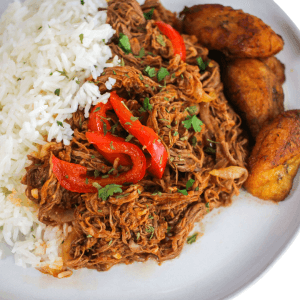Making the perfect chicken wings is all about nailing the internal temperature, which is critical for safety, flavor, and texture. Whether you’re baking, grilling, or frying, knowing when your wings are perfectly cooked ensures they’re juicy, flavorful, safe to eat, and crisp. We’ll dive into everything you need to know about chicken wing temperatures and how to cook them to perfection every time.
The Minimum Internal Cooking Temperature For Chicken Wings
While 165°F (74°C) is the minimum safe internal temperature for chicken wings ( poultry ), aiming slightly higher—between 170°F and 175°F—is ideal for achieving the perfect texture. At these temperatures, the collagen in the meat’s connective tissue begins to break down, creating a tender and juicy bite.
This temperature range also allows the skin to crisp up beautifully without overcooking the meat inside. For wings that are both flavorful and satisfying, this sweet spot ensures they’re fully cooked, safe to eat, and irresistibly delicious.
What is the Safe Minimum Internal Temperature for Chicken Wings?
According to the USDA, the safe minimum internal temperature for chicken is 165°F (74°C). This temperature ensures harmful bacteria like Salmonella are destroyed, making the meat safe to eat. The same temperature guidelines apply when dealing with other chicken meat cuts.
But for chicken wings, aiming for a slightly higher temperature—170°F to 175°F—can improve texture. The collagen in the connective tissues breaks down more at these temperatures, leading to tender, juicy wings that fall off the bone.
How to Measure the Internal Temperature of Chicken Wings
Using a meat thermometer is the most reliable way to check if your chicken wings are fully cooked. Here’s how to do it correctly:
- Choose the Right Thermometer:
A digital instant-read thermometer provides the most accurate readings. - Insert the Probe Properly:
Insert the thermometer into the thickest part of the wing, avoiding bone. Bone conducts heat differently and can give false readings. - Wait for the Reading:
Hold the thermometer steady until the number stops increasing. Look for at least 165°F, or up to 175°F for extra tenderness.

Cooking Methods and Achieving the Perfect Temperature
1. Baking Chicken Wings
- Oven Temperature: Preheat to 400°F (200°C) to 425°F.
- Cook Time: 40-45 minutes.
- Tips: Flip wings halfway through cooking for even browning. Check the internal temperature around the 35-minute mark. Check out our Oven Baked Chicken Wings recipe for a delicious treat.
2. Grilling Chicken Wings
- Grill Temperature: Medium-high heat (about 375°F).
- Cook Time: 15-20 minutes.
- Tips: Use indirect heat for the first 10 minutes, then sear over direct heat for a crispy finish.
3. Frying Chicken Wings
- Oil Temperature: 375°F.
- Cook Time: 8-12 minutes.
- Tips: Drain wings on paper towels and check the temperature immediately after frying.
4. Air Frying Chicken Wings
- Air Fryer Temperature: 375°F.
- Cook Time: 20-25 minutes.
- Tips: Shake the basket halfway through cooking and verify doneness with a thermometer.

Common Mistakes to Avoid and Tips
- Relying on Visual Cues Alone:
While golden-brown skin looks appealing, it doesn’t guarantee the meat is safe to eat. Always use a thermometer. - Not Resting the Wings:
Allow wings to rest for 5 minutes after cooking. This helps juices redistribute, keeping the meat tender. - Overcrowding the Pan:
When baking or frying, overcrowding prevents even cooking and can lead to uneven temperatures. - Seasoning the chicken wings well. This will help with flavor, texture, smell, and color.
- If you are not sure how to make the perfect chicken wing, we have a great recipe you can try: Smoked Crispy Chicken wings.
Here are some of our most popular chicken recipes:
FAQs About Chicken Wings and Cooking Temperatures
Q: Can you eat chicken wings at 160°F?
A: While 160°F is close to the safe range, it’s better to aim for 165°F or higher to ensure all bacteria are killed.
Q: What happens if you overcook chicken wings?
A: Overcooked wings can become dry and tough. Using a thermometer ensures you cook them just right.
Q: Should I marinate chicken wings before cooking?
A: Marinating adds flavor and can help retain moisture. Stella On Fire Co.’s Sweet Fire or Anything Wings seasonings work great in marinades!
Q: Can you check the temperature after removing wings from heat?
A: Yes, but make sure to measure right after cooking to avoid undercooked meat.
Make Your Chicken Wings Unforgettable with Stella On Fire Co.
Once your wings are perfectly cooked, elevate their flavor with Stella On Fire Co.’s premium seasonings. From sweet and spicy to bold and savory, our seasonings are crafted to turn any chicken wing recipe into a culinary masterpiece.
Conclusion
Cooking chicken wings to the correct internal temperature is the secret to delicious, safe-to-eat wings. By using a meat thermometer and following the tips outlined here, you’ll consistently achieve tender, juicy wings that everyone will love.






